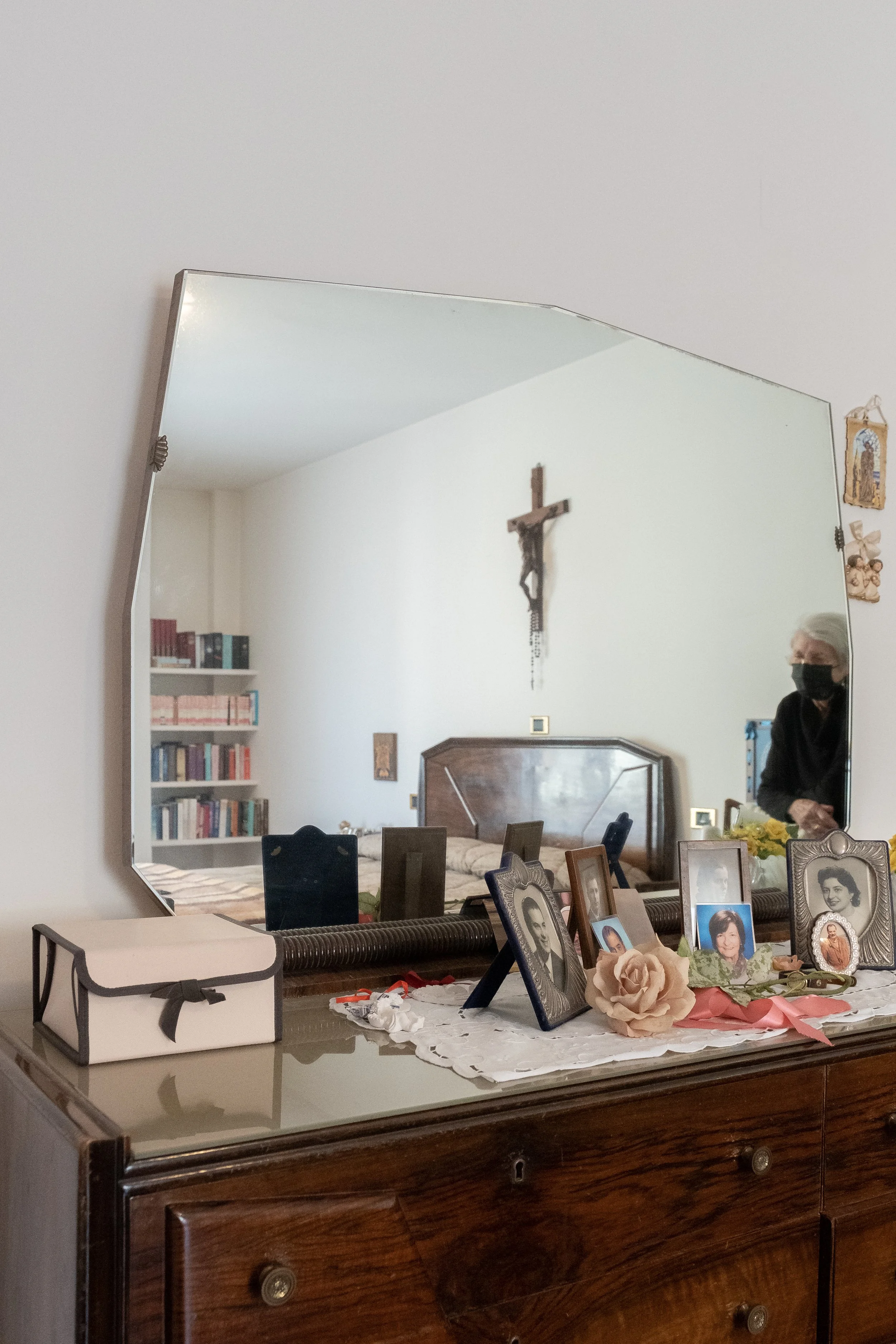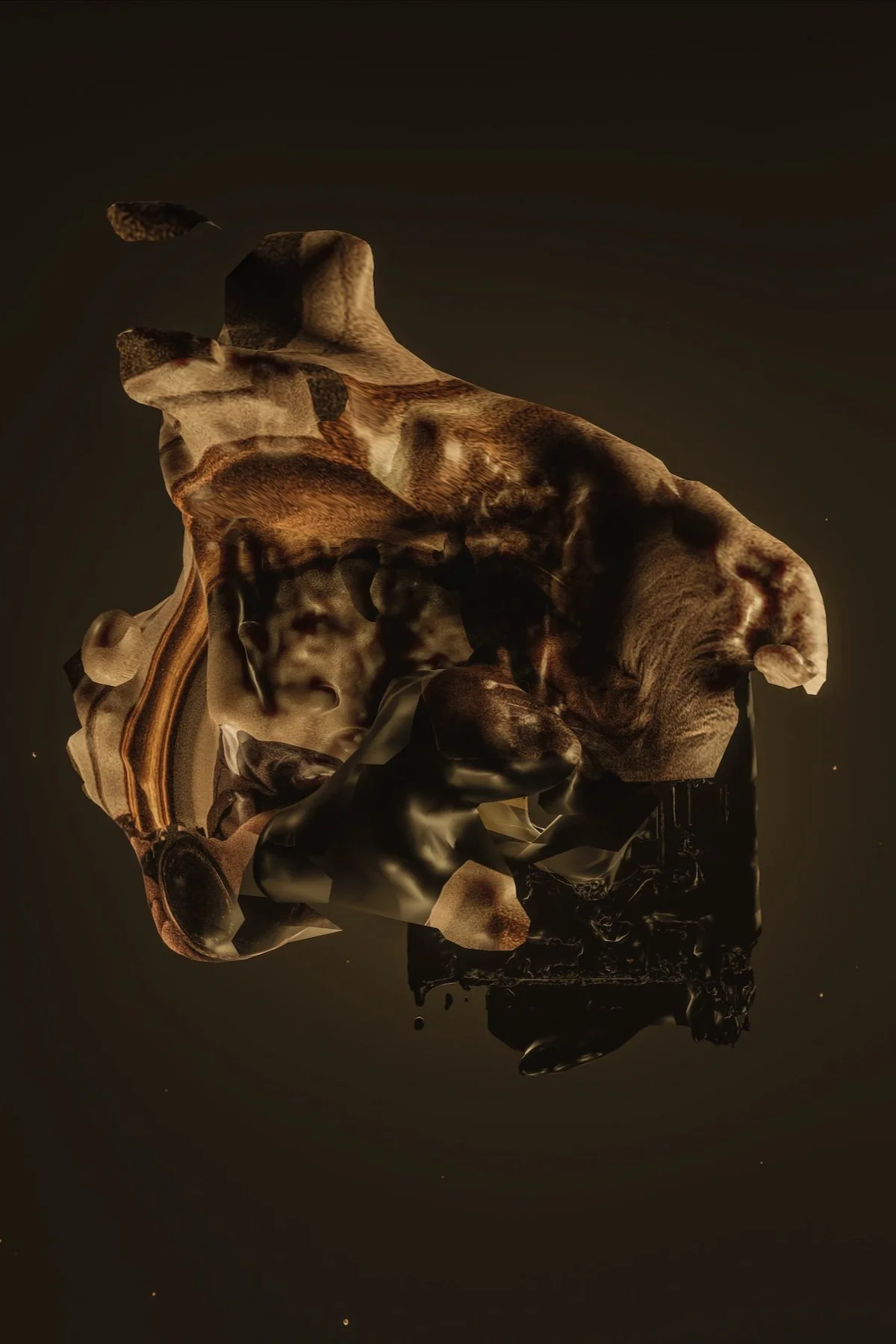
Entering the mirror: a reflective space
The project explores the correlation between dementia and space through the use of photography and photogrammetry. It combines these tools to delve into the connection between memory loss, self-perception, and the perception of space, with a particular focus on the concept of interiority, beginning from the domestic interior.
The project consists of four portraits of the photographer's grandmother, each captured in front of a mirror within her house. In each portrait session, the grandmother shares an anecdote while standing in front of the mirror. These anecdotes reflect her recollection of memories, which her mind processes in a somewhat confused way. The initial photographs were taken using a digital camera and later transformed using photogrammetry to gain a deeper understanding of the interplay between the woman, her mirrors, and her home.
Photogrammetry is a technique that involves creating three-dimensional models using spatial coordinates. By capturing a series of photographs of an object or scene from different angles, specialized software interprets the varying depths within the images using "depth maps." These coordinates are then converted into a comprehensive three-dimensional model of the subject. However, photogrammetry encounters limitations when attempting to analyse objects with reflective surfaces, such as mirrors. The software struggles to calculate the reflected depth within the mirror, resulting in an inaccurate and unconventional representation of the subject.
The distorted and uncanny result obtained from the photogrammetry process serves as a visual metaphor for the impact of dementia on memory. It encourages contemplation on the subjective nature of perception, the perceptual qualities of space, and the boundaries of technology in representing intangible aspects that extend beyond the physical properties of space.





